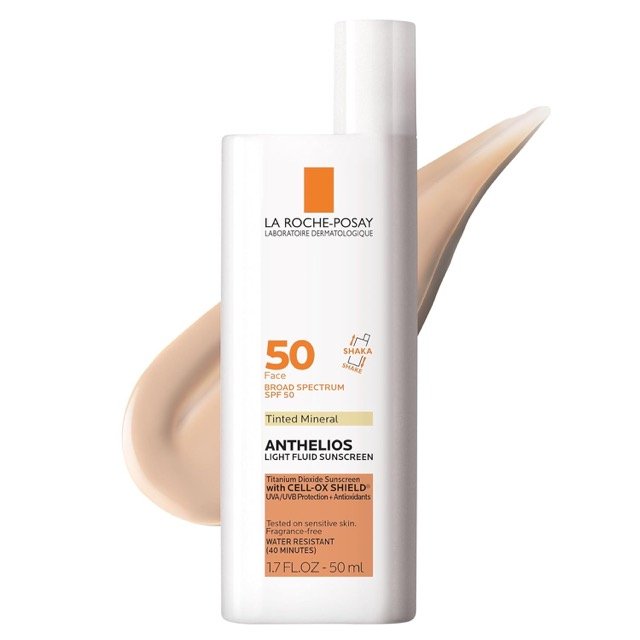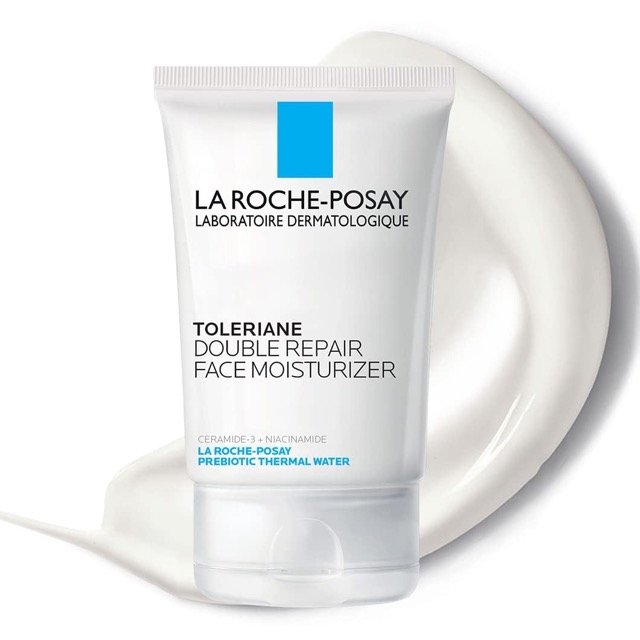Ocrelizumab is a medication that belongs to a class of drugs known as monoclonal antibodies. It is used for the treatment of certain autoimmune conditions, specifically multiple sclerosis (MS) and primary progressive multiple sclerosis (PPMS).
Ocrelizumab works by targeting and binding to a specific protein called CD20, which is found on the surface of B cells. By binding to CD20, ocrelizumab helps to reduce the number of B cells in the body. B cells are a type of white blood cell involved in the immune response, and they play a role in the autoimmune attack on the nervous system in MS.
By reducing the number of B cells, ocrelizumab helps to modulate the immune response, which can help reduce the inflammation and damage to the myelin sheath that occurs in MS. It is administered as an intravenous infusion, typically every six months for relapsing forms of MS and every six months or every three months for primary progressive MS, depending on the dosage.
Ocrelizumab (Ocrevus) Uses:
Multiple sclerosis (relapsing or primary progressive):
- Used to treat relapse forms of MS, such as active secondary progressive illness, relapsing-remitting disease, and clinically isolated syndrome.
Ocrevus Dose in Adults:
Note:
- Before each infusion of ocrelizumab, you will need to take some medications to help prevent certain side effects.
- These medications include methylprednisolone, which is given as an injection 30 minutes before the infusion, and an antihistamine like diphenhydramine, which is taken 30 to 60 minutes before the infusion.
- You may also be advised to take acetaminophen as a premedication.
Ocrevus (Ocrelizumab) dose in the treatment of Primary progressive or relapsing Multiple sclerosis:
- Initial Dosing:
- Day 1: Receive an intravenous (IV) infusion of 300 mg of ocrelizumab.
- Two weeks later: Receive a second IV infusion of 300 mg of ocrelizumab.
- Subsequent Dosing:
- After the initial doses, subsequent doses of 600 mg are administered once every 6 months.
- The first 600 mg dose is given 6 months after the first 300 mg dose.
Missed doses:
- If a dose is missed, it should be administered as soon as possible.
- It's important not to wait until the next scheduled dose.
- After a missed dose is given, the dose schedule should be adjusted so that the next sequential dose is administered 6 months after the missed dose was given.
- It's necessary to ensure that doses are separated by at least 5 months.
Use in children:
The safety and efficacy of the drug in children have not been approved.
Ocrelizumab (Ocrevus) FDA Pregnancy Risk Category: N (Not assigned)
- Ocrelizumab is a type of medication called a monoclonal antibody used to treat multiple sclerosis (MS).
- Its effects on pregnant women and their babies are not fully understood.
- Studies have shown that some similar medications can pass through the placenta to the baby during pregnancy.
- Babies born to mothers who received similar medications may have temporary depletion of certain white blood cells and lower immune response to certain vaccines.
- It is recommended to stop using MS disease-modifying therapies before planning a pregnancy, and not start them during pregnancy, unless there is a high risk of MS activity.
- If a woman at high risk of MS activity is planning a pregnancy, other medications may be considered instead of ocrelizumab.
- It is advised to delay pregnancy for women with ongoing high disease activity. If disease-modifying therapy is necessary, other medications are preferred.
- Women who can become pregnant should use effective contraception during ocrelizumab treatment and for 6 months after the last infusion.
Use of Ocrelizumab while breastfeeding
- It is currently unclear whether ocrelizumab can pass into breast milk.
- We do not know if it can affect the B-cell count in an infant who is breastfed by a mother using ocrelizumab.
- The decision to breastfeed while using ocrelizumab should take into account the potential risk to the infant, the benefits of breastfeeding for the baby, and the benefits of the treatment for the mother.
- The manufacturer does not provide a specific recommendation regarding breastfeeding during ocrelizumab therapy.
- However, other sources generally do not recommend breastfeeding while using ocrelizumab.
Ocrevus (Ocrelizumab) Dose in Kidney Disease:
- The recommended dosage of ocrelizumab does not require adjustments according to the manufacturer's instructions.
- Even in patients with kidney problems, no major changes in how the medication is processed by the body (pharmacokinetics) were observed.
- This means that individuals with renal impairment generally do not need a different dose of ocrelizumab compared to those with normal kidney function.
Ocrevus (Ocrelizumab) Dose in Liver Disease:
- The manufacturer's instructions for ocrelizumab do not recommend any changes to the dosage based on liver impairment.
- Studies have shown that patients with liver problems do not experience significant changes in how the medication is processed by the body (pharmacokinetics).
- Therefore, individuals with liver impairment generally do not require a different dose of ocrelizumab compared to those with normal liver function.
Common Side Effects of Ocrelizumab (Ocrevus):
- Dermatologic:
- Skin infection
- Hematologic & oncologic:
- Decreased serum immunoglobulins
- Decreased neutrophils
- Respiratory:
- Upper respiratory tract infection
- Miscellaneous:
- Infusion-related reaction
Less Common Side Effects of Ocrevus Ocrelizumab):
- Cardiovascular:
- Peripheral edema
- Central nervous system:
- Depression
- Gastrointestinal:
- Diarrhea
- Infection:
- Herpes virus infection
- Neuromuscular & skeletal:
- Back pain
- limb pain
- Respiratory:
- Lower respiratory tract infection
- Cough
Contraindications to Ocrevus (Ocrelizumab):
- Life-threatening infusion reaction history: If a person has experienced a life-threatening reaction to ocrelizumab in the past, it is contraindicated to use the medication again.
- Active hepatitis B virus (HBV) infection: Ocrelizumab should not be used in individuals with an active HBV infection.
Additional contraindications (Canadian labeling):
- Hypersensitivity: Ocrelizumab should not be used in individuals who have a known hypersensitivity or allergy to ocrelizumab or any component of the medication formulation.
- Severe, active infections: Ocrelizumab is contraindicated in individuals with severe and active infections.
- Progressive multifocal leukoencephalopathy (PML): Individuals with a current or past confirmed history of PML, a rare brain infection, should not use ocrelizumab.
- Active malignancies: Ocrelizumab is contraindicated in individuals with active malignancies (cancer).
- Severely immunocompromised states: Ocrelizumab should not be used in individuals with severe immunocompromised conditions, where the immune system is significantly weakened.
Warnings and precautions
Hepatitis B reactivation
- Screening for Hepatitis B Virus (HBV) Prior to Treatment:
- Before starting ocrelizumab treatment, all patients should be screened for hepatitis B virus.
- The screening includes measuring HBsAg (hepatitis B surface antigen) and anti-HBc (antibody to hepatitis B core antigen) levels.
- Hepatitis B Reactivation Risks:
- While no cases of hepatitis B reactivation were reported in MS patients using ocrelizumab, other anti-CD20 monoclonal antibodies have caused severe cases of hepatitis B reactivation.
- HBV reactivation can lead to fulminant hepatitis (rapid and severe liver inflammation), hepatic failure, and even death.
- Actions Based on Screening Results:
- Ocrelizumab should not be administered to patients with active HBV, confirmed by positive results for HBsAg and anti-HB tests.
- If a patient tests negative for HBsAg (not carrying the surface antigen) but positive for HBcAb (has antibodies against the hepatitis B core antigen) or is a carrier of HBV (positive for HBsAg), consultation with a liver disease specialist is necessary before starting and during ocrelizumab treatment.
Herpes infection
- Herpes infections, including herpes zoster, oral herpes, genital herpes, and herpes virus infection, were more common in patients who took ocrelizumab during clinical studies compared to those who took a different medication.
- Specifically, oral herpes occurred more frequently in patients treated with ocrelizumab compared to those who received a placebo (a non-active substance).
- However, the majority of these infections were not severe and ranged from mild to moderate in intensity.
- It's important to note that there were no reports of herpes infection spreading to other parts of the body, which is known as disseminated herpes.
- If you experience any symptoms of a herpes infection while using ocrelizumab, it's advisable to consult your healthcare provider for appropriate management.
Infection
- Before starting ocrelizumab treatment, infections should be evaluated, and treatment initiation should be delayed if an active infection is present until the infection is resolved.
- Clinical studies have shown a slightly higher incidence of infections in patients receiving ocrelizumab compared to those receiving a different medication or placebo.
- More than half of the patients who received ocrelizumab experienced one or more infections.
- Ocrelizumab use in multiple sclerosis patients has been associated with an increased risk of respiratory tract infections (both upper and lower), skin infections, and herpes-related infections.
- However, ocrelizumab use was not linked to an increased risk of serious infections.
- Respiratory tract infections were mostly mild to moderate in severity and primarily consisted of upper respiratory tract infections and bronchitis.
Infusion reactions
- Ocrelizumab can cause infusion reactions, which are symptoms that occur during or after the infusion of the medication.
- Common symptoms of infusion reactions include itching, rash, hives, redness of the skin, wheezing (bronchospasm), throat irritation, pain in the throat, difficulty breathing (dyspnea), swelling of the throat or voice box (pharyngeal or laryngeal edema), flushing, low blood pressure (hypotension), fever (pyrexia), fatigue, headache, dizziness, nausea, and fast heart rate (tachycardia).
- The incidence of infusion reactions in multiple sclerosis studies was around 34% to 40% in patients who received pre-medication with methylprednisolone (or a similar steroid) and potentially other medications to reduce the risk of infusion reactions. The highest incidence of reactions was observed with the first infusion.
- While fatal infusion reactions have not been reported, serious infusion reactions can occur, although they are rare. In some cases, hospitalization may be required.
- Infusion reactions should be monitored during the infusion and for at least one hour after its completion. It's important to note that infusion reactions can occur up to 24 hours after the infusion.
- To minimize the frequency and severity of infusion reactions, premedications should be administered before each infusion. These typically include methylprednisolone (or an equivalent steroid) and an antihistamine, sometimes with the addition of acetaminophen.
- Depending on the severity of the reaction, infusion may need to be interrupted, the infusion rate may need to be decreased, or ocrelizumab treatment may need to be discontinued. Symptomatic supportive care may also be required to manage the reactions effectively.
Malignancy
- Using ocrelizumab may raise the chances of developing cancer.
- Studies have found that patients treated with ocrelizumab had a higher occurrence of malignancies, including breast cancer, compared to those taking a different medication or placebo.
- Among females who received ocrelizumab, 0.8% were diagnosed with breast cancer, while no cases were reported in the group receiving the comparator drug or placebo.
- It is important for patients to follow the regular breast cancer screening guidelines to detect any signs or changes early on.
Progressive multifocal Leukoencephalopathy
- While no cases of progressive multifocal leukoencephalopathy (PML) were found in ocrelizumab studies, there have been instances of JC virus infection leading to PML in patients treated with other anti-CD20 antibodies and multiple sclerosis (MS) therapies.
- Certain risk factors, such as being immunocompromised or using multiple immunosuppressant medications, are associated with PML.
- PML is a viral infection of the brain caused by the JC virus, and it can be life-threatening or result in severe disability.
- Usually, PML occurs in individuals with weakened immune systems.
- The symptoms of PML are varied and worsen over days to weeks.
- They may include weakness on one side of the body, coordination difficulties, vision problems, and changes in thinking, memory, and orientation leading to confusion and personality changes.
- If any signs or symptoms suggesting PML arise, treatment should be stopped, and appropriate diagnostic tests should be conducted.
- It's important to note that MRI findings may be noticeable before clinical signs or symptoms appear.
Ocrelizumab: Drug Interaction
Note: Drug Interaction Categories:
- Risk Factor C: Monitor When Using Combination
- Risk Factor D: Consider Treatment Modification
- Risk Factor X: Avoid Concomitant Use
|
Risk Factor C: Need to Monitor while on combination therapy |
|
|
Ocrelizumab may reduce the diagnostic efficacy of this test |
Coccidioides immitis Skin Test |
|
Ocrelizumab May increase the side effects/ immunosuppressant effects of these drugs |
Immunosuppressants |
|
Ocrelizumab May lower the therapeutic effects of these drugs |
Pidotimod Tertomotide |
|
Risk Factor D: Avoid these combination/ Consider alternative treatments |
|
|
Ocrelizumab May increase the side effects/ immunosuppressant effects of these drugs |
Echinacea Leflunomide |
|
Ocrelizumab May reduce the therapeutic effects of these drugs |
Vaccines (Inactivated) |
|
Risk Factor X: Avoid these combination (Contraindicated) |
|
|
Ocrelizumab may increase the side effects/ immunosuppressant effects of these drugs |
Cladribine Tacrolimus (Topical) |
|
Ocrelizumab may reduce the therapeutic effects of these drugs |
BCG (Intravesical) |
|
Ocrelizumab may increase the side effects and diminish the efficacy of vaccines |
Vaccines (Live) |
Monitoring Parameters for Ocrevus:
Hepatitis B Screening and Infusion Monitoring:
Hepatitis B Virus Screening:
- Before starting therapy, it is recommended to screen all patients for hepatitis B virus (HBV) infection by conducting tests for hepatitis B surface antigen (HBsAg) and hepatitis B core antibody (anti-HBc).
- To screen for chronic or unresolved HBV infection, either a total anti-HBc test (including both immunoglobulin G [IgG] and immunoglobulin M [IgM]) or an anti-HBc IgG test should be used. Avoid using anti-HBc IgM alone, as it may only confirm acute HBV infection.
- In patients who test negative for HBsAg but positive for anti-HBc, regular monitoring for HBV reactivation is advised during treatment. This includes HBV DNA and ALT (alanine aminotransferase) testing approximately every 3 months.
Infusion Monitoring:
- During the infusion of ocrelizumab, it is important to monitor for infusion reactions. These reactions may include symptoms such as itching, rash, hives, difficulty breathing, throat irritation, swelling of the throat or mouth, flushing, low blood pressure, fever, fatigue, headache, dizziness, nausea, and fast heartbeat.
- Monitoring for at least 1 hour after the infusion is also recommended to promptly detect any delayed reactions.
- Additionally, it is important to monitor for signs and symptoms of infection, malignancy (such as breast cancer), and progressive multifocal leukoencephalopathy (PML) during the course of treatment.
Regular screening for HBV and vigilant monitoring during and after the infusion of ocrelizumab can help ensure the safety and well-being of patients.
How to administer Ocrelizumab (Ocrevus)?
IV Administration:
- Ocrelizumab should be administered through a dedicated intravenous (IV) line using a 0.2 or 0.22 micron in-line filter.
- Prior to each infusion, premedication is required. It involves administering methylprednisolone (100 mg IV) 30 minutes before the infusion and an antihistamine (such as diphenhydramine) 30 to 60 minutes before the infusion. Acetaminophen may also be considered as part of the premedication.
First 2 Infusions (300 mg dose):
- The infusion should be started at a rate of 30 mL/hour.
- Every 30 minutes, the infusion rate should be increased by 30 mL/hour.
- The maximum infusion rate should not exceed 180 mL/hour.
- The duration of the infusion is 2.5 hours or longer.
Subsequent Infusions (600 mg dose):
- The infusion should be started at a rate of 40 mL/hour.
- Every 30 minutes, the infusion rate should be increased by 40 mL/hour.
- The maximum infusion rate should not exceed 200 mL/hour.
- The duration of the infusion is 3.5 hours or longer.
Infusion Monitoring:
- It is important to monitor for infusion reactions throughout the infusion process.
- After the infusion is complete, observation should continue for at least one hour.
- If an infusion reaction occurs, the infusion should be interrupted, discontinued, or the rate decreased based on the severity of the reaction.
Careful administration and monitoring of the infusion process, along with premedication, help ensure the safe and effective delivery of ocrelizumab. Promptly addressing any infusion reactions is crucial for the well-being of the patient.
Mechanism of action of Ocrelizumab (Ocrevus):
- Ocrelizumab is a type of medication called a monoclonal antibody.
- It is designed to target and bind to a specific protein called CD20, which is found on certain types of immune cells called B-cells.
- These B-cells play a role in multiple sclerosis by influencing the immune response and producing antibodies.
- By binding to CD20, ocrelizumab helps to remove these B-cells from the body through various mechanisms.
- This includes triggering the immune system to attack and destroy the B-cells, as well as activating a process called complement-mediated cytolysis, which causes the cells to break down.
- The purpose of depleting CD20 expressing B-cells is to reduce their impact on the progression of multiple sclerosis.
- These B-cells are involved in presenting antigens, producing autoantibodies, regulating cytokines (chemical messengers of the immune system), and forming clusters of immune cells in the meninges (the protective membranes surrounding the brain and spinal cord).
- By specifically targeting CD20 expressing B-cells, ocrelizumab aims to modify the immune response and potentially slow down the progression of multiple sclerosis.
Onset of action:
- Within 14 days after receiving an infusion of ocrelizumab, the number of CD-19+ B-cells in the bloodstream, which is used as a marker for B-cell counts, is reduced.
Duration of action:
- The median time for B-cell recovery, meaning the time it takes for B-cell counts to return to either the baseline level or the lower limit of normal, is approximately 72 weeks.
- However, the range can vary from 27 to 175 weeks.
Distribution:
- Ocrelizumab is distributed in the body, with approximately 2.78 liters in the central compartment and 2.68 liters in the peripheral compartment.
Metabolism:
- The primary way ocrelizumab is cleared from the body is through catabolism, which is the breakdown of the antibody.
Half-life elimination:
- The half-life of elimination for ocrelizumab, which is the time it takes for half of the medication to be cleared from the body, is approximately 26 days.
Excretion:
- Ocrelizumab has a constant clearance rate, estimated to be around 0.17 liters per day.
- The initial time-dependent clearance is estimated to be 0.05 liters per day.
International Brands of Ocrelizumab:
- Ocrevus
Ocrelizumab Brand Names in Pakistan:
- Ocrevus








